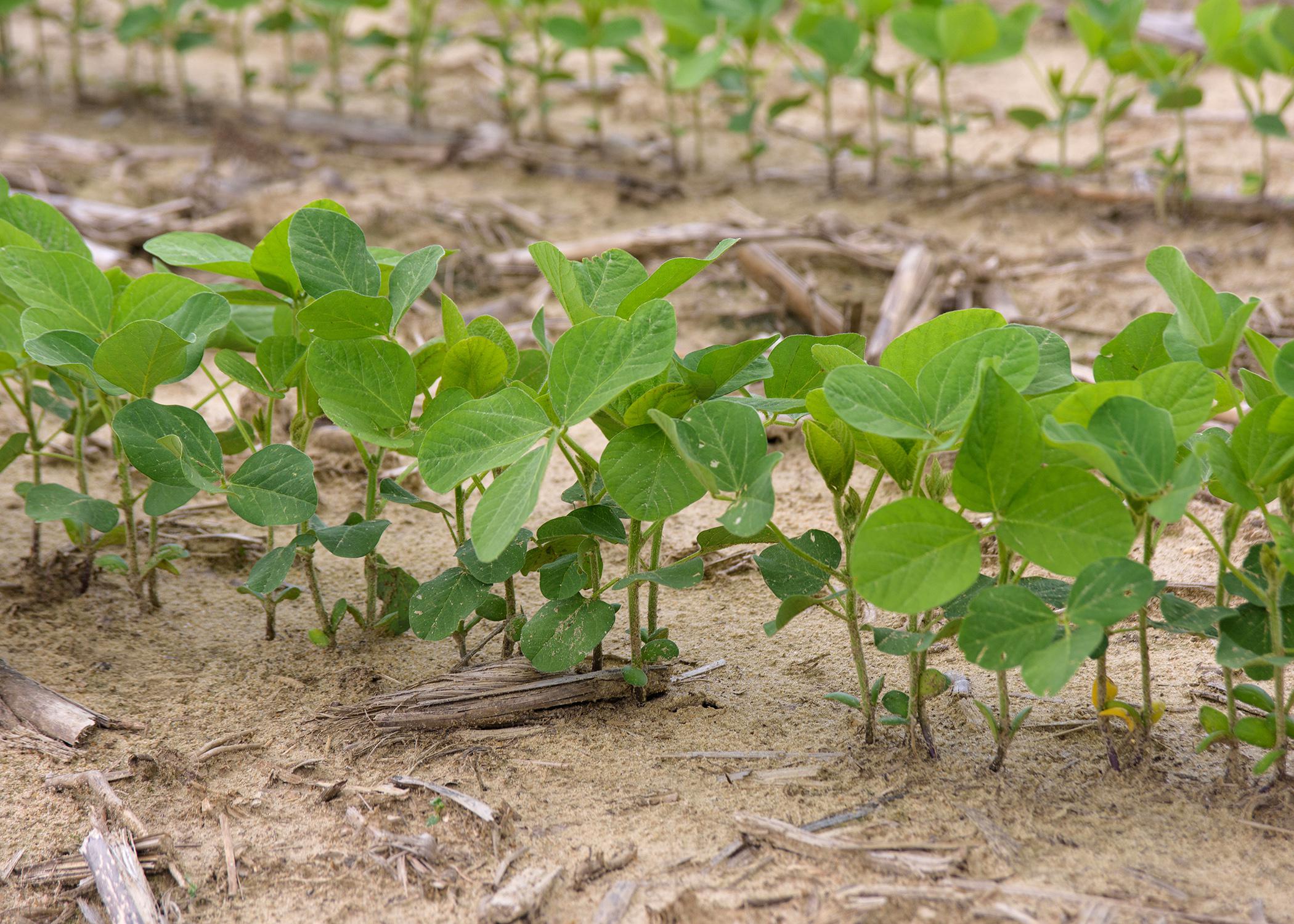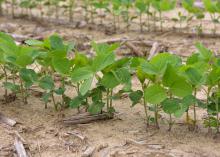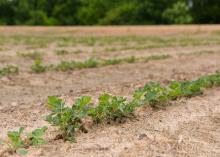2.25M acre Mississippi soybean crop underway
STARKVILLE, Miss. -- Mississippi’s 2 million-plus acre soybean crop is mostly planted and looks to be in good shape early on, with the only lingering acres yet to be planted.
The U.S. Department of Agriculture estimated that the crop was 86% planted as of May 19, 2024, and 13% in excellent condition and 62% in good condition. The crop is typically close to three-fourths planted by this time of the year.
Trent Irby, an associate director with the Mississippi State University Extension Service, was the state’s soybean specialist for years and has kept up with the crop’s progress.
“To say ‘It depends on where you are standing’ summarizes much of the current status of this year’s soybean crop,” Irby said. “Some areas of the state received frequent rainfall events, limiting opportunities for planting and other management needs such as herbicide applications.
“At the same time, other areas of the state had more ideal environmental conditions and in these areas, the crop is looking great. The main challenges to this point have just been getting the crop planted and following up with timely weed control measures,” he said.
USDA estimated in March that Mississippi farmers would plant 2.25 million acres, and Irby said the actual number should be very close to this estimate. In 2023, Mississippi growers harvested 2.13 million acres of soybeans.
“Commodity prices and weather during each crops’ optimum planting window are the two main factors that influence planting intentions,” Irby said.
For decades through the early 2000s, soybeans were not considered a high-value crop. Instead, growers planted it when they ran out of time to plant cotton or corn, or when the land in production was poor.
Better prices and MSU Extension’s efforts to encourage best management practices in soybean production steadily pushed interest in this crop and increased acreage.
“In the last 10-15 years, we have seen substantial increases in yield, keeping soybean as one of our top commodities in the state,” Irby said.
Jason Bond, Extension weed scientist and researcher with the Delta Research and Extension Center in Stoneville, said many growers are in the process of applying a post-emergence herbicide to control weeds, but a second application is often needed.
"Many growers bought Xtend soybean seed, which depends on dicamba for weed control,” Bond said. “A big challenge was that the dicamba labels for Xtend crops were vacated in February. Growers can use the existing stock they had or what was on the shelf, but there’s not enough of it to go around.”
Growers with XtendFlex soybeans can use Liberty, but those who can’t find dicamba or have Xtend soybeans must use older products such as Prefix.
Bond said Palmer amaranth control is a priority now, and he expects grass control to be a challenge again this year as it has in recent years.
Statewide, about half the soybean crop is irrigated in any given year, and these irrigated acres tend to produce higher yields than non-irrigated acres. Although grown across the state, soybean acres are concentrated in the Delta. In 2023, Bolivar County harvested the most acres as a county with Sunflower and Washington counties next.
Despite high soybean acreage this year, Will Maples, Extension agricultural economist, said the current outlook for soybeans is higher supplies, higher stocks and lower prices.
“November soybean futures have traded around $12 per bushel for the last few weeks, but in May, the USDA released its first supply and demand estimates for the 2024/25 crop,” Maples said. “They estimate the average farm price to decrease to $11.20 per bushel, down from $12.55 per bushel received in 2023.”
The U.S. is estimated to increase supplies by 7% this year on the strength of more acreage plus carryover from 2023.
“The U.S. saw lower production last year, but exports suffered due to fierce competition from South America, which increased overall U.S. carryover to 340 million bushels,” Maples said. “Currently, the early estimate for ending stocks for 2024 is 445 million bushels.”
Maples said U.S. exports continue to face pressure from South American competition, so it will be hard for demand to drive prices higher.
“Producers need to closely monitor any supply-side distributions that might present attractive marketing opportunities,” he said.







